DigiByte has some key benefits when it comes to transactions, speed being one of its best perks. DGB transactions are processed much faster than popular cryptos like Bitcoin and Litecoin.
Created in 2013 by Jared Tate, DigiByte (DGB) is a cryptocurrency project that aims to provide users with a high-speed security blockchain. DGB was released to the public in 2014, and for a long period, DigiByte was one of the major altcoins in the market.
9 years after its inception, DGB is considered a secure and forward-thinking crypto. Similar to Decred, it was developed and improved by its community, being a popular crypto initiative. Those two projects are not just crypto, they integrate decentralized open-source platforms, that also work on areas such as secure authentication, smart contracts, and governance. Let's examine the main characteristics of these projects, including their operation, transactions, and privacy. By the end of this article, we hope you have a better understanding of these two cryptos, and be able to make reasonable decisions about their ecosystems.
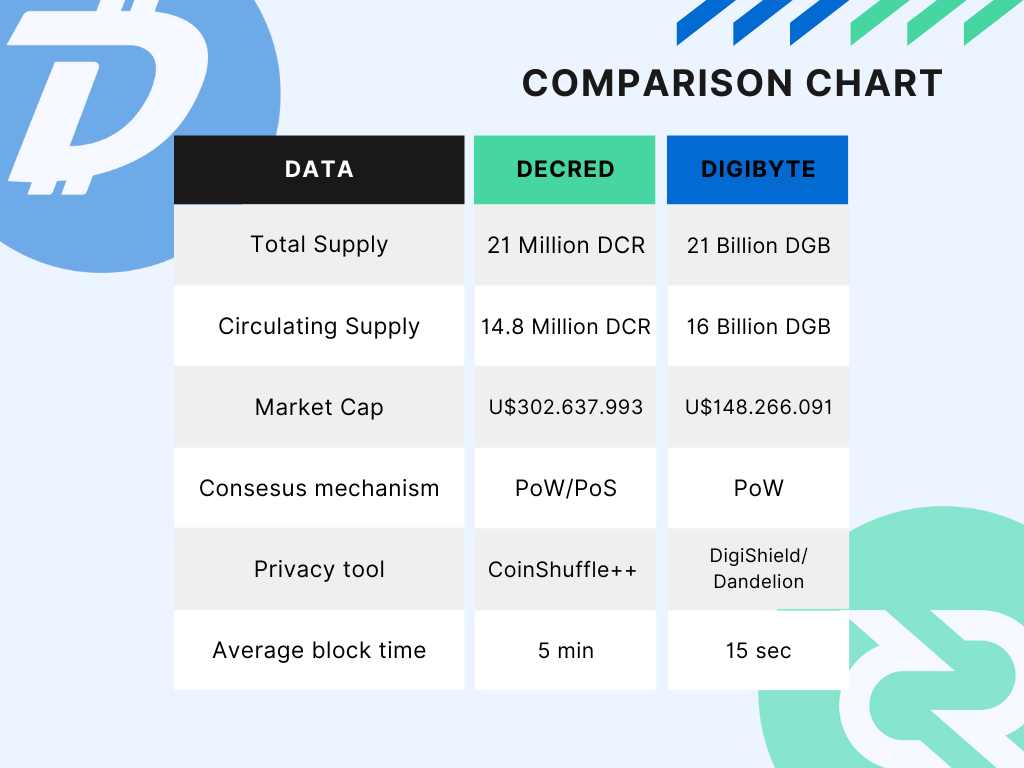
Operation
Like the majority of cryptos, DigiByte uses a Proof-of-Work consensus mechanism, which allows miners to add new blocks to the blockchain and earn DGB tokens as a reward. What differentiates DGB blockchain from others are some unique features.
Three-layer architecture
DigiByte is structured in a three-layer architecture, which provides security and communications to function on the network, those 3 layers are:
1- Application Layer
Here developers can create all types of digital assets using the DigiAssets protocol. It is where developers can build and deploy decentralized applications that run on the network. This layer provides a platform for developers to create applications that leverage the benefits of blockchain technology.
2- Public Ledger Layer
The middle layer is responsible for providing security and administration. It stores a transparent record of all transactions that have taken place on the network. The Public Ledger ensures that all transactions on the network are auditable and transparent.
3- Core Layer
The bottom layer provides communication and operating procedures, the foundation of the Digibyte blockchain. It includes the underlying codebase, consensus mechanism, and network infrastructure. Any server, computer, tablet, or mobile phone connected to the DigiByte network becomes a node that helps the Core Layer.
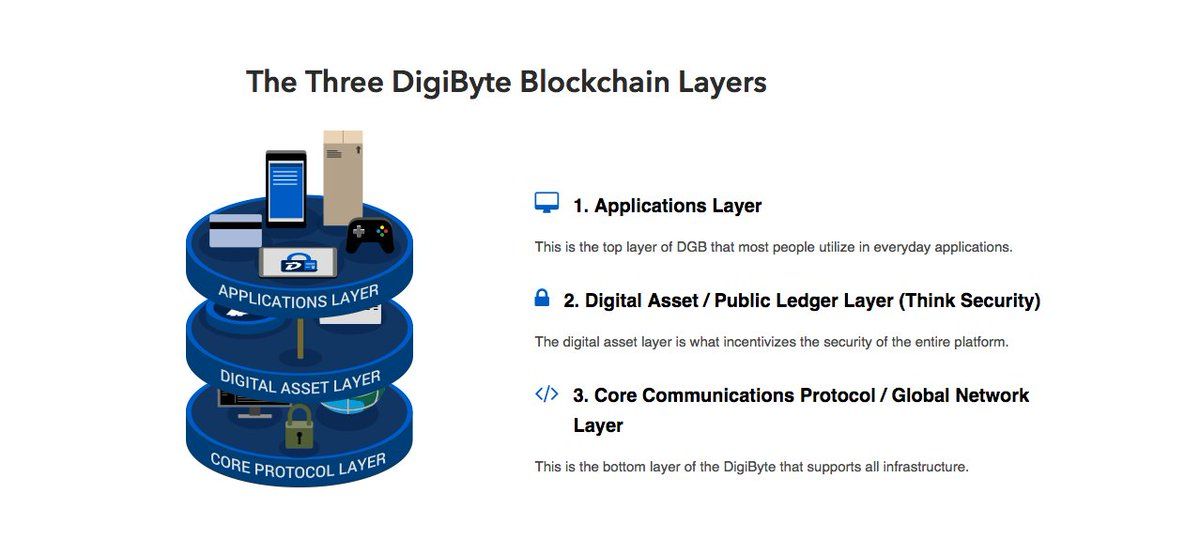
Decred opted for a hybrid proof-of-work/proof-of-stake consensus mechanism, which enables miners and stakeholders to participate in the network's decision-making. Decred blends those two mechanisms by taking the usual PoW and adding five validators who have staked DCR, responsible for checking the miner work. If 3 of those 5 validators vote that the work is correct, the block will be added to the Decred blockchain.
Decred uses the BLAKE-256 mining algorithm. You can mine DCR with GPUs, but it is a lot more effective using ASICs, machines that mine a single algorithm at a time. Decred miners receive 10% of the block reards, while PoS voters receive 80%.
Unlike the majority of blockchains that employ PoW, DigiByte uses five different mining algorithms:
-SHA256
-Scrypt
-Skein
-Qubit
-Odocrypt
Mining rewards get distributed to miners on each algorithm equally. You can mine DGB on any computer through either CPU, GPU, or ASICs.
Funding
DigiByte relies on community support and donations to fund the development/maintenance of the project. One of the most notable organizations that support Digibyte is the Digibyte Awareness Team (DAT), which promotes DGB use worldwide. DAT is composed of volunteers who rely on community donations.
Another significant initiative is Digibyte Foundation. Another non-profit organization dedicated to educating people and organizations on the benefits of using DigiByte and its applications. Although DigiByte counts on its community donations and initiatives, DigiByte does not have a centralized source of funding. While the community has proven dedication and support to the cause, the lack of a formal funding mechanism may present challenges to the project's sustainability over time.
Decred has found a solution to the sustainability problem by creating a treasury. 10% of all block rewards get directed to this treasury which actively funds development, marketing, and other proposals submitted on the Politeia platform. This self-funding way empowers stakeholders and encourages discussions between them. Anyone can submit a proposal on Politeia or comment on someone's proposal, following the project's open-source ethos.
Transactions and privacy
DigiByte has some key benefits when it comes to transactions, speed being one of its best perks. DGB transactions are processed much faster than popular cryptos like Bitcoin and Litecoin. Blocks are mined every 15 seconds. An early implementation of the Segwit soft fork, enabled up to 1066 on-chain transactions per second. DigiByte also made its transactions cost-effective, charging a very low transaction fee (U$0.0005).
Decred implemented Lightning Network, a layer-2 scaling solution built on the Decred blockchain. With it, users can create payment channels between themselves and make near-instant and low-cost transactions. These payment channels allow users to trade with each other without the necessity of confirmation on the main Decred blockchain, enhancing the scalability and utility of the Decred network. DCRDEX (Decred Decentralized exchange) is another good option for trading, allowing users to trade DCR with many other coins like Bitcoin, Litecoin, Doge, Monero, and others, with no arbitrary fees.
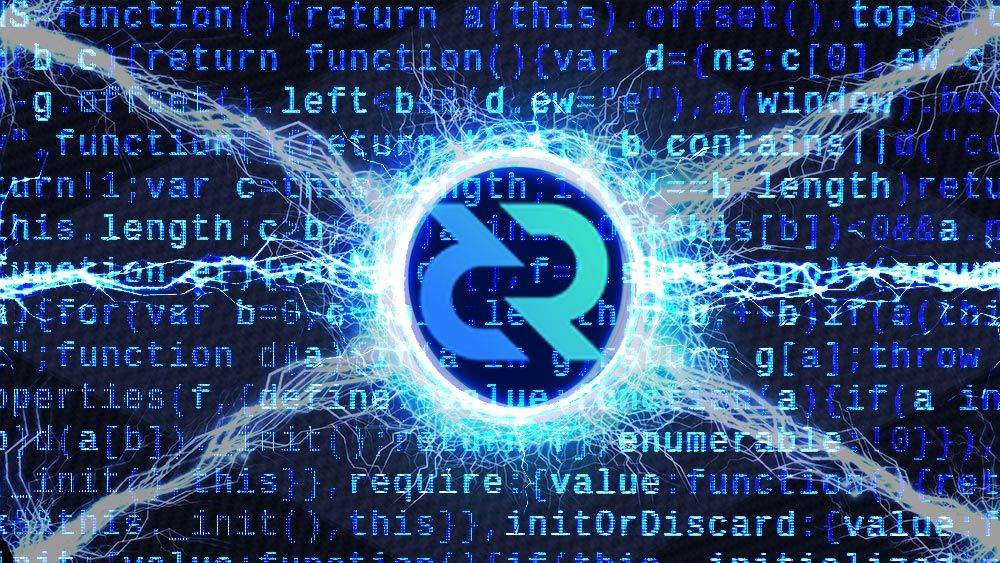
DigiByte also looks to protect users privacy. The DigiShield algorithm, developed by the DigiByte community, adjusts the difficulty of mining blocks based on the amount of network activity, making it much more difficult for an attacker to launch a 51% attack. Dandelion privacy protocol is another DGB tool, used to obfuscate the origin of a transaction by making it pass through a series of nodes before broadcasting it to the main blockchain. Other interesting privacy strategies were implemented by the DigiByte community, like the integration with the Tor browser, which can help increase anonymity by hiding a user's IP address.
Decred developers also implemented a key tool for the users security: Coinshuffle++ a security protocol used by users to shuffle coins with other users in a decentralized manner. Coinshuffle++ makes it extremely difficult for anyone to trace inputs and outputs.
Moving Forward
In a nutshell, both Decred and Digibyte are projects with distinct features and advantages. Decred's hybrid PoW/PoS, governance system, and Lighting Network integration make it an excellent choice for decentralized governance, efficient payments, and trade possibilities with DCRDEX. Meanwhile, Digibyte's multi-layered blockchain makes it a charming option for users who value speed and security.
DCR and DigiByte represent promising blockchain projects. Their technology approaches make them ideal candidates for a wide range of applications. Would you like to see DigiByte listed on DCRDEX? Leave a comment!


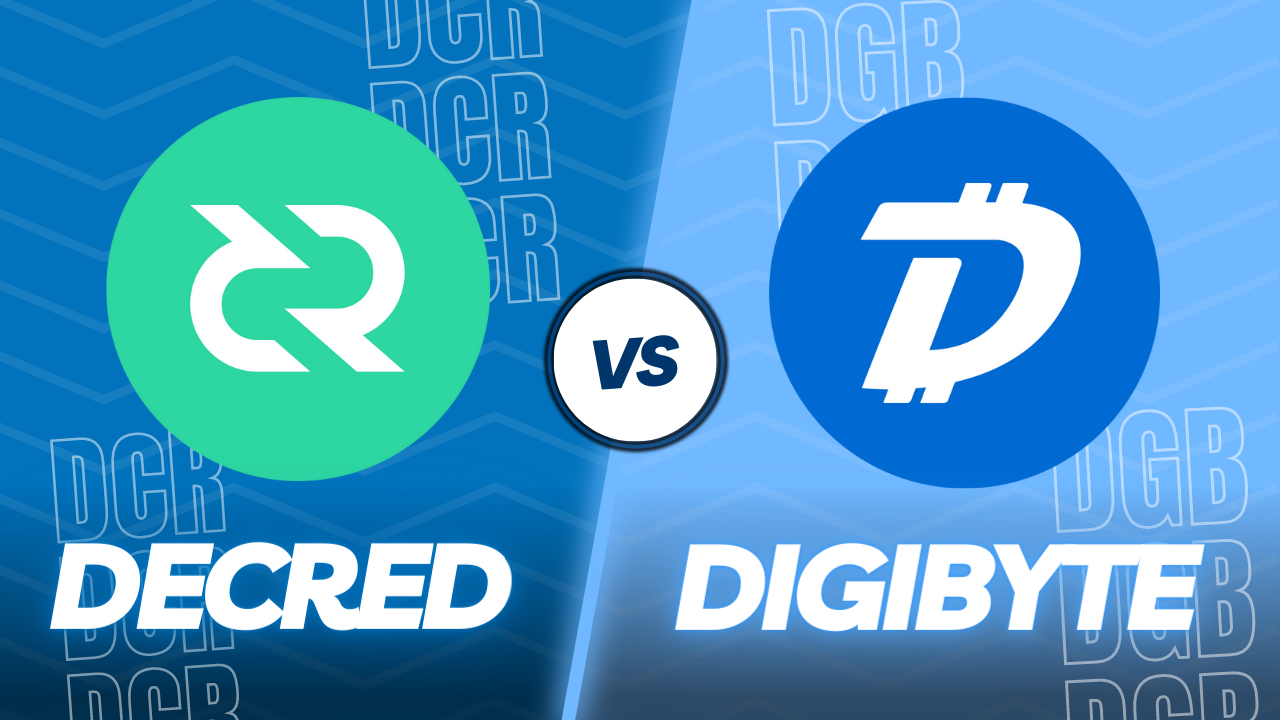
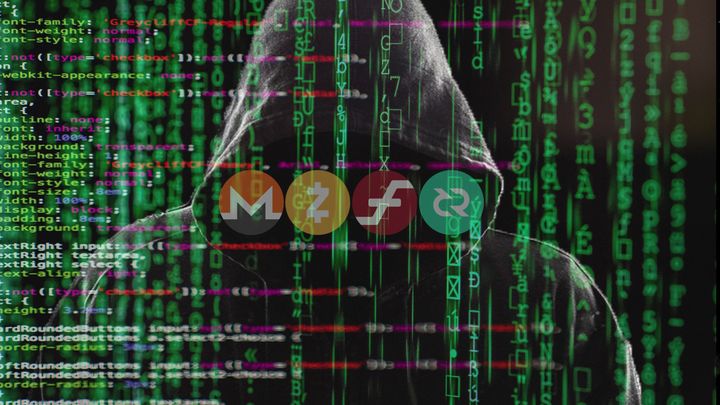
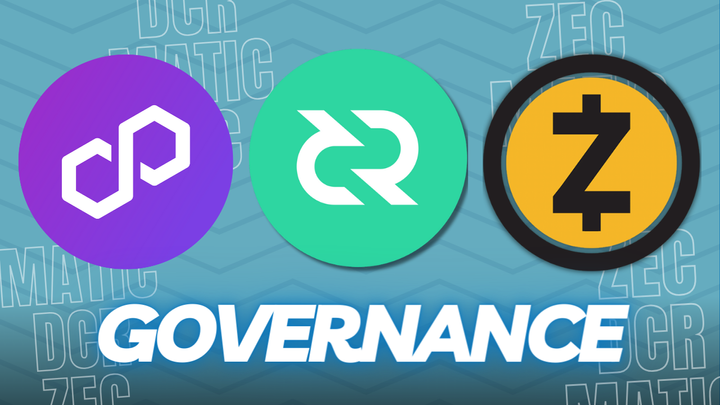
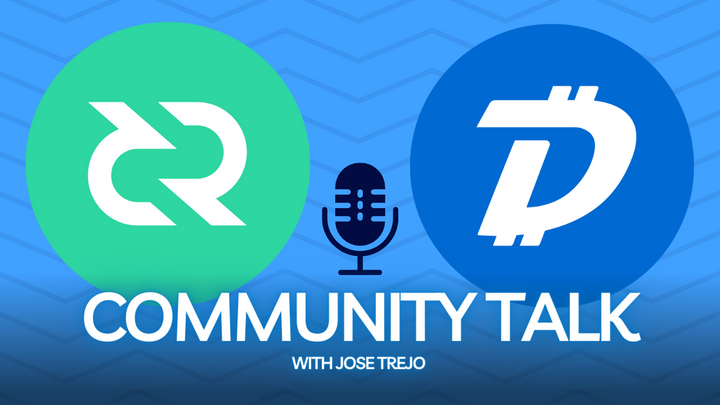
Comments ()